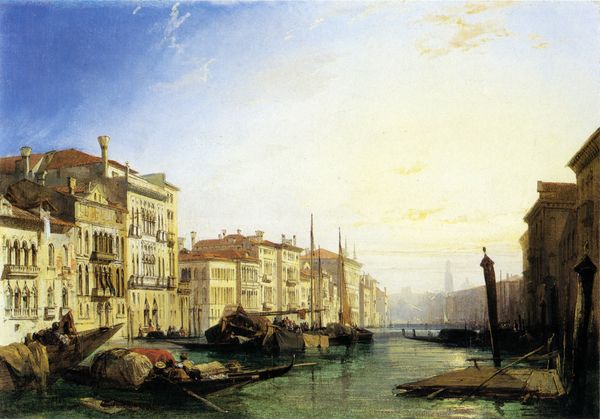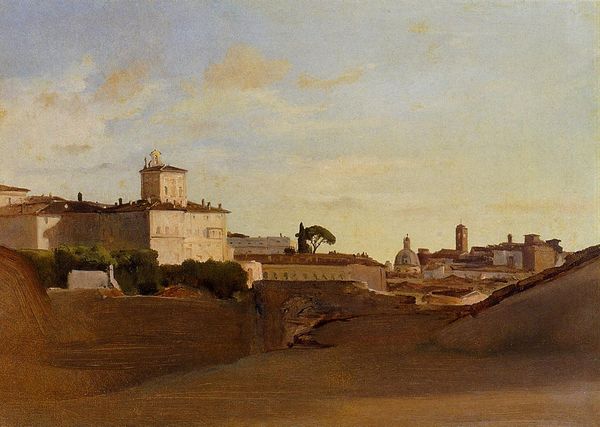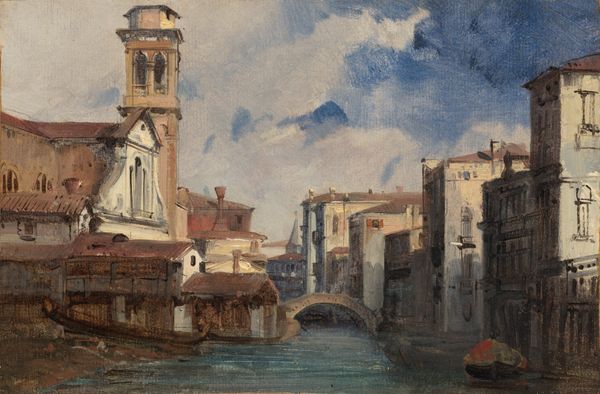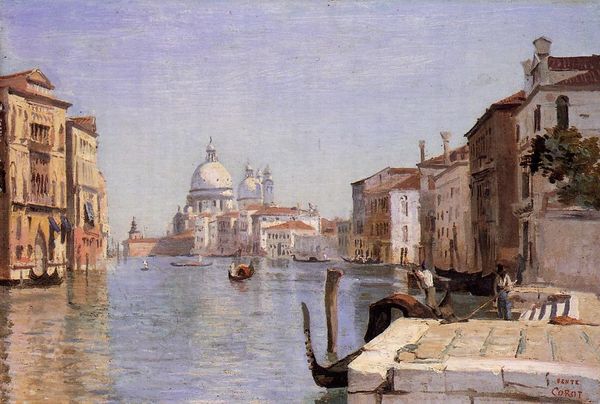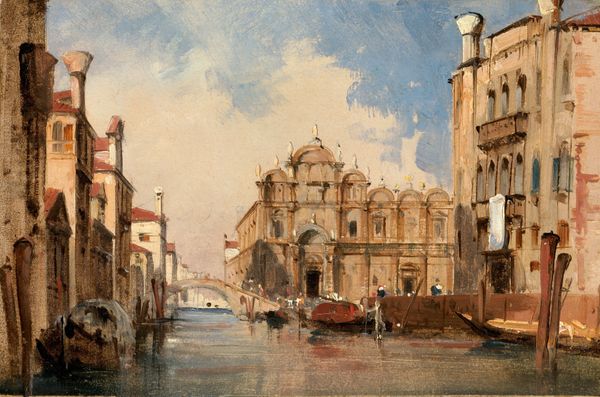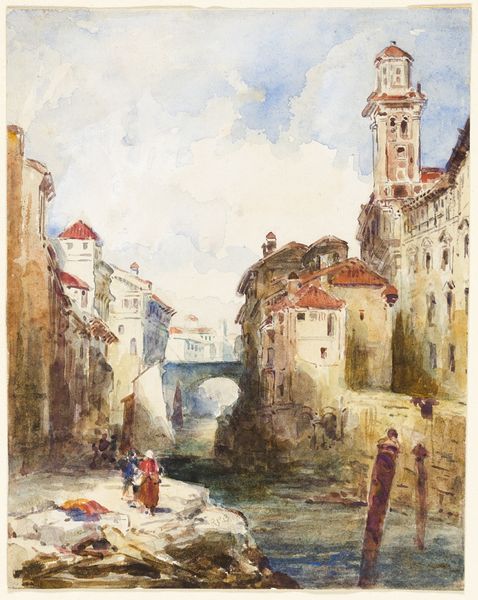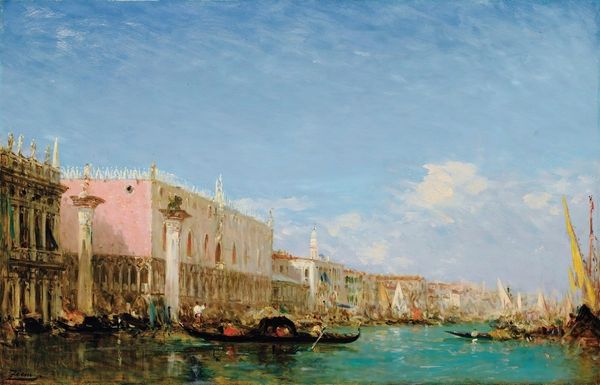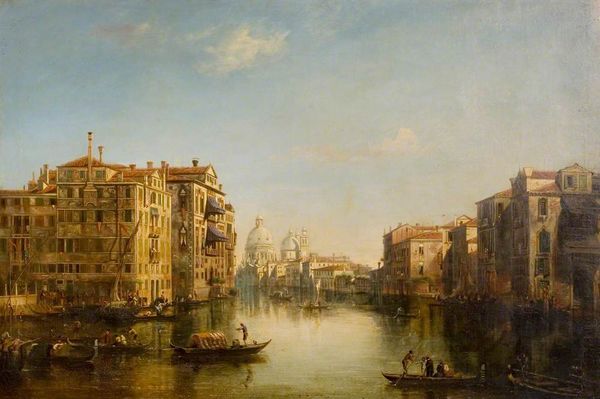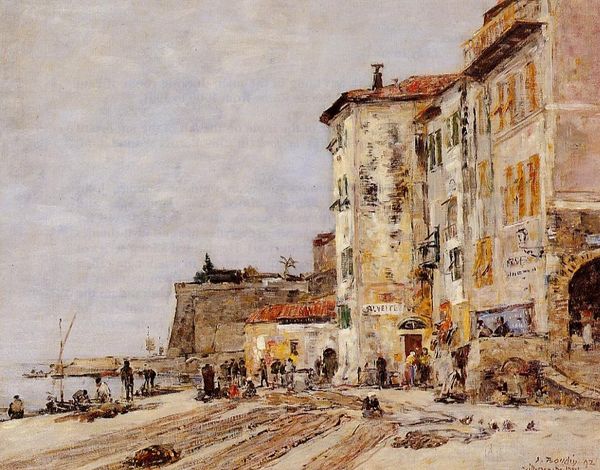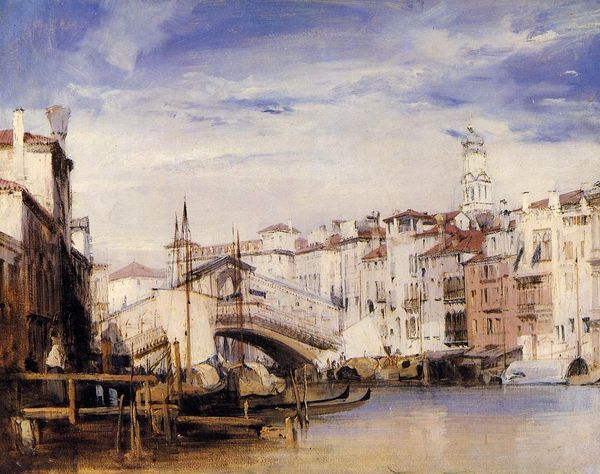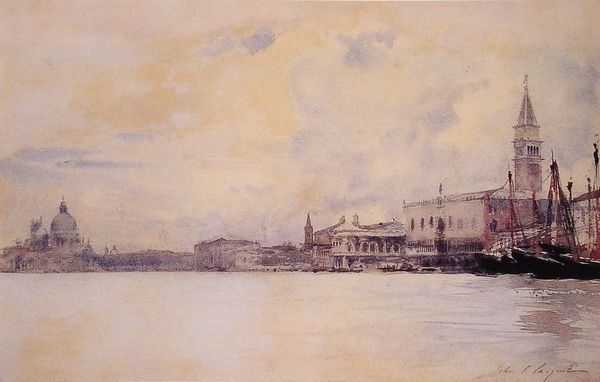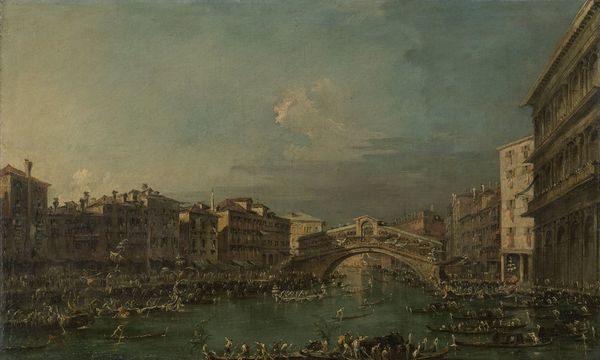
painting, watercolor
#
venetian-painting
#
painting
#
landscape
#
oil painting
#
watercolor
#
romanticism
#
cityscape
#
watercolor
Copyright: Public domain
Editor: This watercolor, “The Grand Canal, Venice, Looking Toward the Rialto" by Richard Parkes Bonington, feels so light and airy. The buildings almost seem to dissolve into the sky. What do you see in this piece beyond just a pretty cityscape? Curator: I see a subtle commentary on power and representation. Venice, for centuries, was a symbol of opulent trade and colonial reach. Bonington, though capturing its beauty, is also participating in the Romantic era's idealization of the past. Editor: Idealization? How so? It just looks like he was painting what he saw. Curator: But what is he choosing to show, and from what angle? The Grand Canal was not merely a picturesque waterway; it was the main artery of a powerful, often ruthless, mercantile empire. Where are the less savory aspects of that history? Where are the marginalized voices of the people whose labor built that beauty? Bonington gives us the Rialto, but elides the social cost. Does that make sense? Editor: So, by focusing on the aesthetic beauty, he's potentially overlooking or even erasing the complex and sometimes troubling history of Venice? Curator: Exactly! The picturesque can be a powerful tool for obscuring uncomfortable truths. We must ask ourselves, whose Venice are we seeing here? Whose story is being told, and whose is being left out? How might the absence of those narratives affect our understanding of the present? Editor: That gives me a lot to think about. I hadn't considered how much a seemingly straightforward landscape could be laden with those kinds of historical implications. Curator: Precisely! The act of seeing becomes an act of critical engagement. It allows us to unpack power dynamics and consider alternative perspectives. I'm glad we could engage in that process together.
Comments
No comments
Be the first to comment and join the conversation on the ultimate creative platform.

